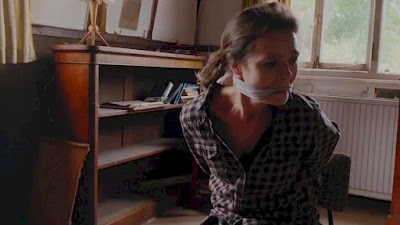The German writer-director Christian Petzold has taken on the task of hauling elements of the classical into the here-and-now. He made a success of 2018's Transit, which mapped the concerns of wartime onto the streets of modern Marseilles; his follow-up Undine, a somewhat divisive item on the festival circuit, takes another crack at the selkie legend that floats back into filmmakers' minds every now and again. (Both Splash and The Little Mermaid were arguably variations on this theme; John Sayles' The Secret of Roan Inish, Neil Jordan's similarly titled Ondine and the recent Cartoon Saloon charmer Song of the Sea were closer to the original source.) It may be crucial you know this in advance, because if you went in blind, you'd find yourself subject to some generally undermotivated, borderline mystifying behaviour. Paula Beer, emergent star of European TV and film (Babylon Berlin, Ozon's Frantz), plays the eponymous Berlin museum guide, introduced in the midst of an especially intense break-up: "If you leave me, I'll kill you," she warns wavering beau Johannes (Jacob Matschenz), which is one way of ending things. Franz Rogowski, star of Transit and German cinema's foremost Joaquin Phoenix lookalike, plays Christoph, an industrial diver being stalked by a catfish named Günther. Undine and Christoph enjoy an explosive meet-cute: she pulls him to safety after an aquarium shatters above his head in a quiet backstreet cafe. Thereafter, over a brisk ninety minutes, Petzold charts the ups-and-downs of this relationship - conventional enough, except the ups are all on dry land, and the downs take place underwater. In the unlikely event there are still any Disney fans reading: the mute Gunther is as close as you'll get to a singing crab.
The narrative idea of worlds colliding carries over into the filmmaking. Some of what we see is presented as straightfacedly as it would be in any other Petzold film. The tour of Undine's museum is exactly that, with Beer set to giving a lecture on the redesign of Berlin after reunification; the diving asks the stars to don wetsuits and oxygen tanks. Yet this rigorous realism has been spliced with something far more fantastical and unlikely. Transit worked because the social ills Petzold was diagnosing - rising authoritarianism and nationalism, restrictions on movement - existed in past and present alike. Here, he's blending two very different flavours, and at first they sit funny in your mouth, as if the director had sprinkled sea salt on your Sugar Puffs. Yet I'm not so sure Petzold is taking this experiment entirely seriously - or, at least, he's not taking this experiment as seriously as he took Transit. This may be why Rogowski has been permitted to give Christoph a strangulated "comedy" voice; why, too, Undine discovers the Bee Gees after Christoph resuscitates her to the rhythm of "Stayin' Alive". One of the film's peculiar fascinations: watching an actress as subtle and technically precise as Beer - cast for her ability to get through those long, fact-heavy spiels on Berlin architecture, and give the impression she knows exactly what she's talking about - trying to make sense of a characterisation bearing no resemblance to any earthly, flesh-and-blood woman; who is, bottom line, a sexy mermaid nerd. More compelling than the people are the places. Petzold shoots the empty courtyard of that cafe in a way that somehow tunes into its history, its vibrations; he watches trains intersecting like people, and repurposes a humdrum tunnel of scaffolding as a site of some visual significance. I saw nothing to disabuse me of the notion this is Petzold's idea of a goof: an attempt to see how far he can push this approach, what he can get away with now he's guaranteed the funding that gets an auteur's films round and beyond the festival circuit. Yet it's a goof that almost comes off - and a suggestion that even Petzold's goofs and misfires are going to be distinctive, textured and ravishingly framed.
Undine will be available to stream via Curzon Home Cinema from Friday.

















